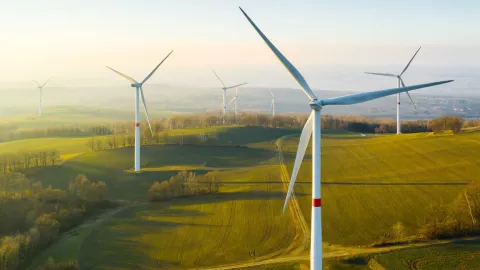Created in 2015, NEW – Centre for New Energy Technologies remains committed to anticipating trends and creating value for EDP. The mission of this R&D center is to create new products that will contribute to the decarbonization of the energy sector. Boasting over 50 researchers and 22 projects in its portfolio, the center continues to grow.
Twenty people gather every day at NEW - a research center located at Labelec - to invent the future of energy and contribute to a carbon-free society. The EDP Group's research and development center has grown considerably over the past five years and has already launched 22 projects with a global budget of €280 million.
NEW director João Maciel says these were "five intense years" marked by "close collaboration with the Business Units." According to the director of the R&D center, the secret of its 30% success rate in applications for competitive funding from the European Union (three times more than the average for this kind of scheme) lies in “involving at least one EDP Group business unit in each project.”
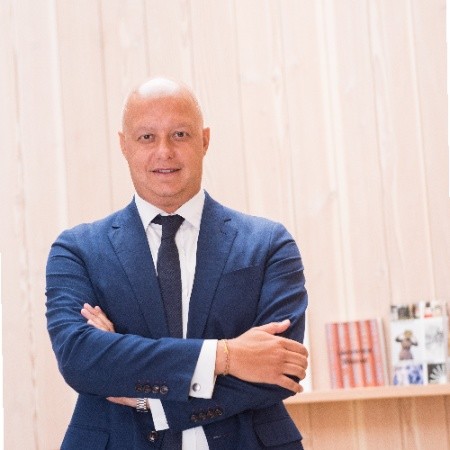
“EDP business units are usually project partners or third parties, which is a kind of associate partner. Our role as an R&D center is also to anticipate trends and create options”.
João Maciel, NEW R&D Director
The importance of the 3 Ds
Sustainability and Decarbonization will continue to play a critical role in the company's research strategy. João Maciel points out several trends for the energy sector.
“There is a focus on the 3 Ds. D for Decarbonization, as there is a consensus that it is untenable to keep carbon emissions at the same level, which means that we need cleaner and more carbon-efficient production methods. This is where renewable energies and the mitigation of environmental problems associated with conventional generation come in, along with more flexibility in conventional hydro generation and anything that will use more renewable energy in the production process," Maciel points out.
Then comes D for Distribution, because according to the R&D center director, “it is important to leverage everything involving distributed production. Energy communities, supported by photovoltaic micro-production, energy storage and customer flexibility management, for example, are something we have been working a lot on."
Finally, there is D for Digital, which touches upon everything: sensors and IoT, automation, advanced computing, machine learning, and artificial intelligence. "All these things are here to stay and are getting more and more advanced, with more research power. And the trick here is to use them for the benefit of energy assets (grids, renewable power plants, and so on) in order to increase efficiency, improve operation and maintenance, and predict failures. We are talking about intelligence on the data that our assets are generating," he adds.
Finally, Maciel states that the focus will remain on C for Customer and D for Democratization, with the customer at the center of all decisions and as a key element in all research projects. “The EU Clean Energy Package enshrines this concept of the customer as an actor in the energy market. This does not mean that customers - more specifically, those with micro-production or 'manageable loads' - will enter the energy market directly; it means that there will be 'layers' of aggregation which will then bring my energy and my neighbor's energy to energy markets, thus paying us for the flexibility we bring into the system. We play the role of managers, or aggregators, in that community. It is a new role for EDP, but it is something we are exploring," he concludes.
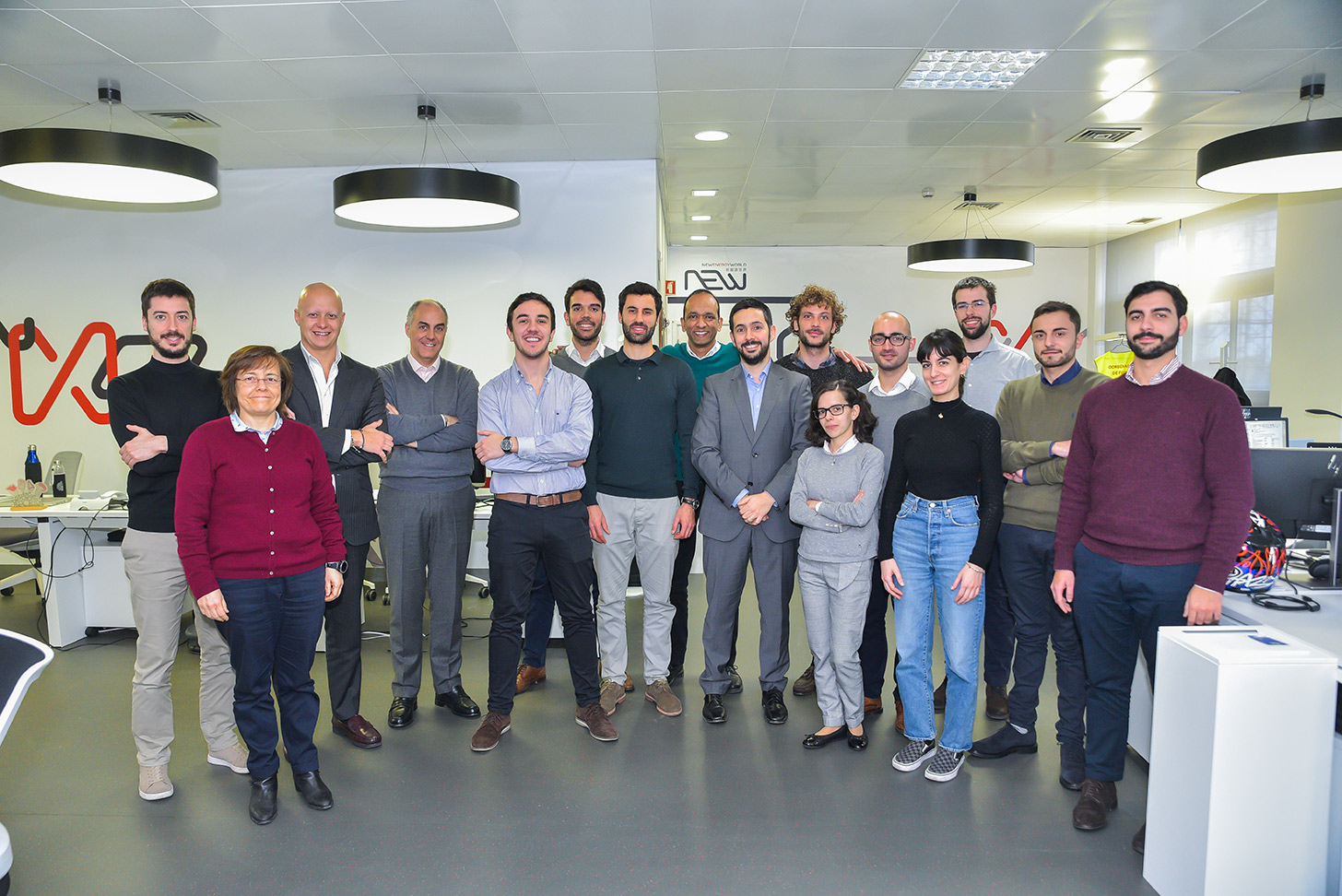
Increasing renewable energy efficiency
With 15 projects underway, plus two that are about to start and five that are already completed, NEW has a lot of knowledge to share.
With both the team and the projects thriving, NEW is working on the EDP Group's five innovation areas: Smart Grids and Interoperability; Positive Energy Communities; Renewable Energy Integration and Flexibility; Renewable Energy Technologies; and Digital Energy.
The Renewable Energy Technologies area has six projects underway in well-explored fields, such as wind power and solar energy, but also in emerging areas such as ocean energy.
The department head, Miguel Marques, believes that renewable energy plays a critical role in the decarbonization process and that boosting the quantity and efficiency of renewable energy production is key for making it more competitive and investment-attractive.
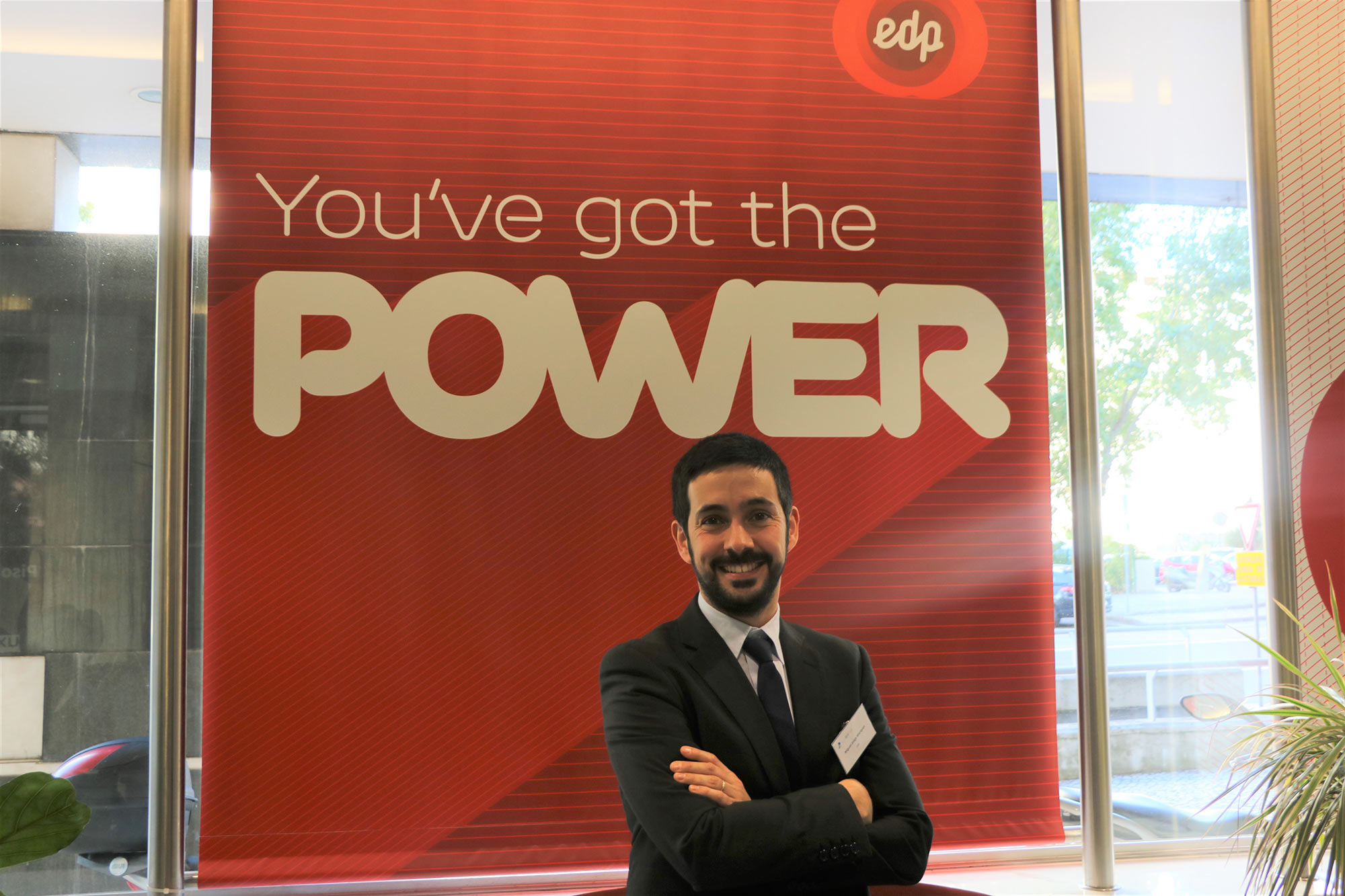
“What we are doing is helping make renewable energies more beneficial for the company. On the one hand, we look at technologies that are a little more mature, such as wind power technologies, and find ways to improve their performance and usefulness.”
Miguel Marques, Head of the Renewable Energy Technologies area
This includes, for instance, new concepts for operating and maintaining assets such as turbines and offshore platforms with underwater robots and drones. "By improving, automating and making the inspection process cheaper, we also cut on final technology costs. Moreover, we reduce risks and improve the reliability of the data we receive. On the other hand, we look at new technologies to see if they are of any interest, especially in terms of costs. The energy of the oceans, for instance, has tremendous potential which has not yet been fully explored," says Miguel Marques.
Atlantis was created precisely to improve the performance of mature technologies such as wind power. This is a three-year project that aims to pave the way for new offshore wind energy inspection technologies by creating a test center in the Atlantic Ocean, where waves are very severe.
Another example of EDP's work in this area is EUSysFlex, a project whose mission is to create a roadmap for Europe in order to boost its renewable energy production penetration to 50% by using several technologies.
Flexibility, flexibility, flexibility...
Flexibility is on the agenda. According to the head of the Renewable Energy Integration and Flexibility area, Nuno Filipe, XFLEX HYDRO was devised to test new ways of adding flexibility to hydroelectric plants, thus enhancing hydroelectric potential in terms of deployment efficiency, availability, and flexibility services for the Electric System.
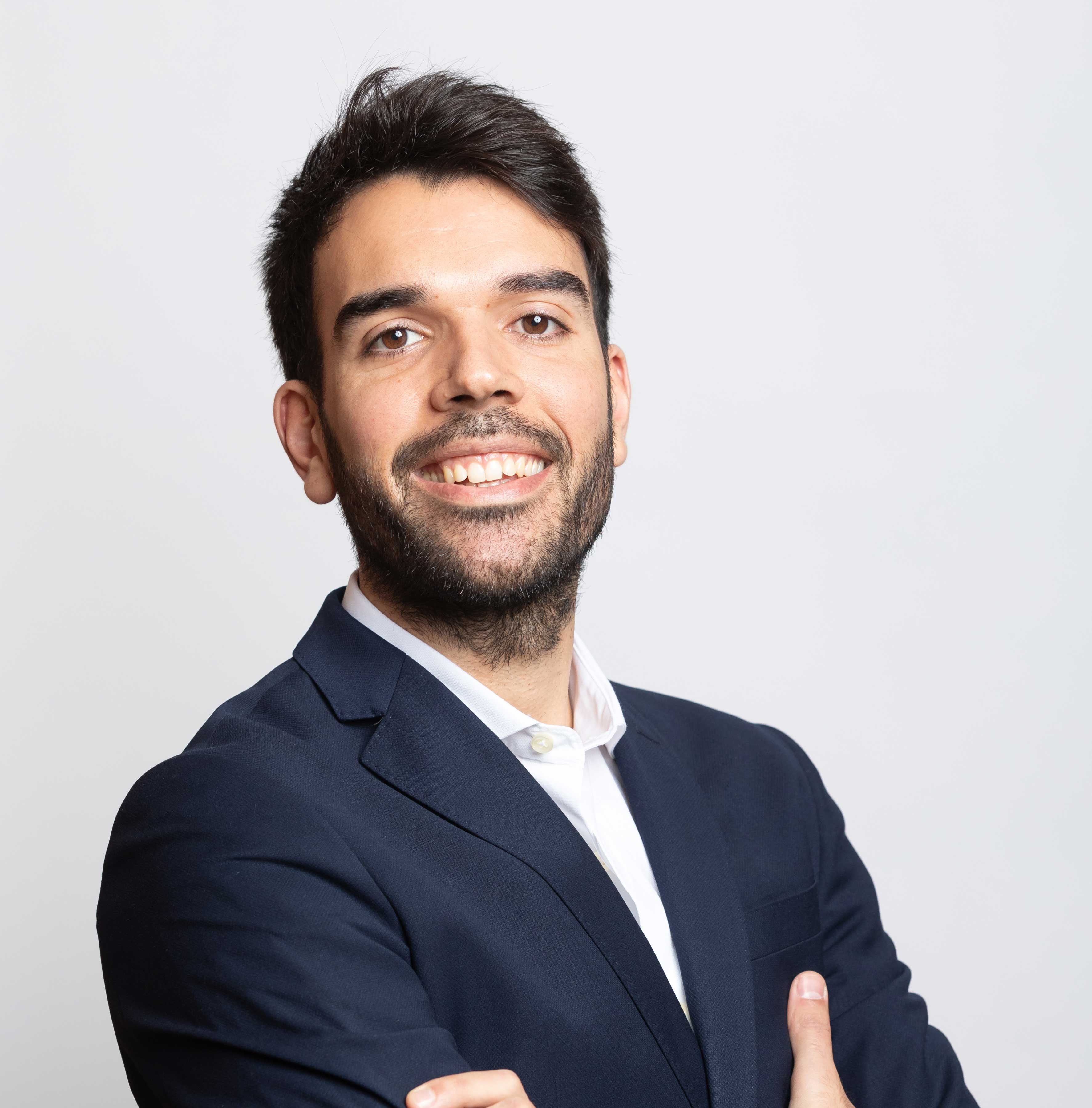
"Hydroelectric plants already play a very important role in the stability of the system, and the purpose of XFLEX HYDRO is to provide them with additional flexibility through a low investment. But the ultimate goal is to integrate more renewable energies," he says.
Nuno Filipe, Head of the Renewable Energy Integration and Flexibility area
'Green' hydrogen
More recently, EDP announced its commitment to 'green' hydrogen, a very important piece in the decarbonization puzzle.
The EU goals are clear: we must decarbonize the energy system. EDP is at the forefront of the generation decarbonization process, and the targets could not be clearer. However, the energy system is quite complex. "Electricity production accounts for only about 20% of the challenge, and we must decarbonize everything else, such as transportation and industry. Hydrogen is as a new form of energy that could propel the decarbonization of all these sectors." One of the projects about to be launched in this area is FlexnConfu, and its main goal is to provide the company with more experience in the hydrogen field.
In addition to this there is also the BEHYOND project, co-developed with EDP Inovação, which is the result of a partnership between Norway and Portugal. It consists of a feasibility study for offshore hydrogen production, combining hydrogen generation and offshore farms.
Smarter grids
New concepts that touch upon all NEW projects are being developed by the Smart Grids and Interoperability area. The goal is to make all devices communicate with the devices available in your neighborhood.
One such example is the DOMINOES project, which will test the concept of energy transaction between different residential actors. This project will be implemented in Valverde (Évora, Portugal), where neighbors will be able to trade energy among themselves and use this flexibility solution not only for their own benefit, but also for the benefit of their community and of the electricity grid. It will thus be possible to make sure that someone with an energy surplus will be able to store that energy for their neighbors.
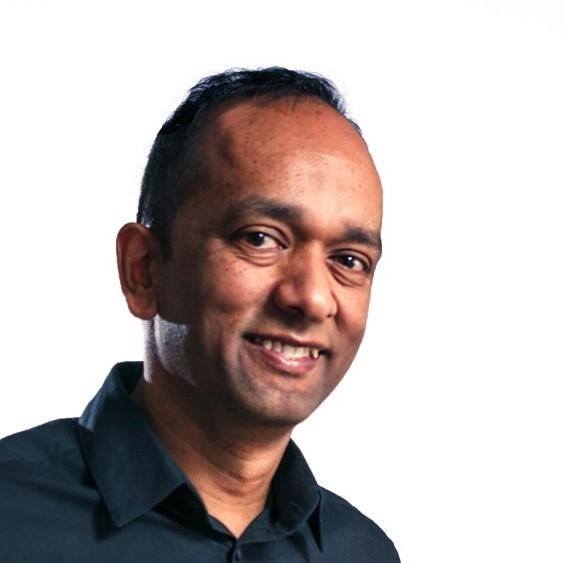
“The great advantage of this area is that it focuses not only on the energy aspect, which concerns us, but also on a whole range of situations that may interest us in the future, such as having devices that communicate directly with the market and sell their owner's services in the market”.
Manuel Pio, Head of the Smart Grids and Interoperability Area
More sustainable cities and communities
Although cities cover only 2% of the planet's surface, they account for about 60% of the world's energy consumption and 70% of global greenhouse gas emissions and waste. Given the growing number of densely populated urban centers, cities will play a central role in building a more sustainable and inclusive future.
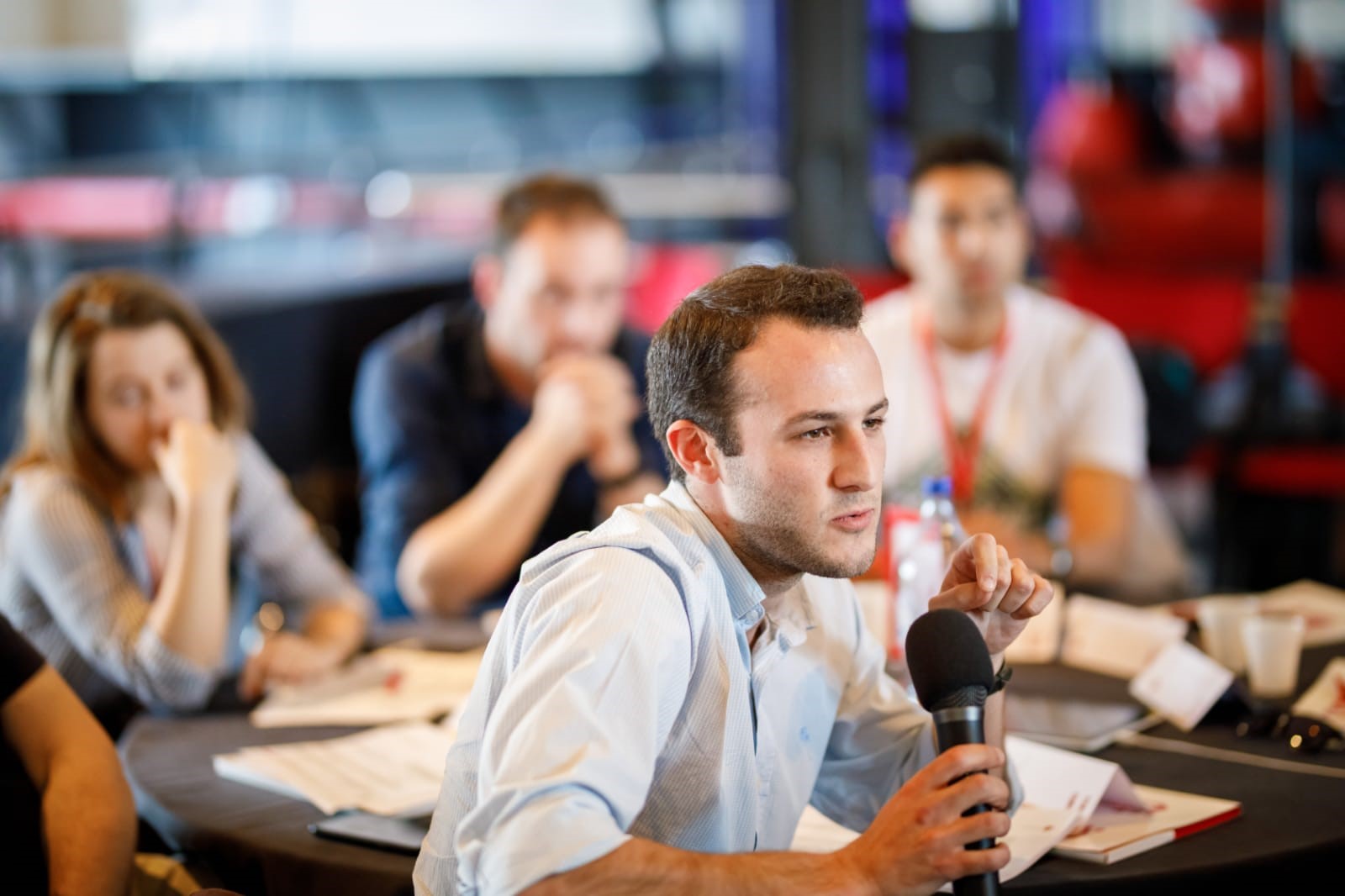
"Urban innovation, of which the energy sector is a cornerstone, is the tool that will allow us to build that future".
José Campos Costa, Head of the Positive Energy Communities area.
NEW R&D is at the center of such innovation by coordinating projects such as POCITYF, which has a €22.5 million budget. This is the first time that a Portuguese organization coordinates a smart city project.
Securing renewable energy predictability
In the digital area, this team is developing next-generation models that will allow the company to predict events through data analytics, machine learning, and other tools. One of the projects - Smart4RES - aims to create tools that will make it possible to provide highly accurate short-term forecasts on the power output of renewable energy farms.
In this case, NEW's contribution will focus on the development of forecasting techniques for extremely short forecasting horizons, which are expected to improve renewable energy production forecasts by up to 20%. The purpose of this project is to provide more data analytics and machine learning tools for renewable energy forecasts.
"We are talking about an inclusive approach that encompasses knowledge of meteorology, physics, applied mathematics, data science, and power systems".
Luísa Serra, researcher
Thank you, Horizon 2020! Hello, Horizon Europe!
None of these projects would be possible without the support of the world's largest R&D funding program - the European Union's Horizon 2020 Program. Between 2014 and 2020, the H2020 program distributed about €80 billion across all fields of knowledge in Europe. This has been NEW's biggest source of funding, as 20 of its 22 projects are or were funded by this initiative, providing more than €30 million for R&D over five years.
H2020 will end in December 2020, paving the way for the new Framework Program - Horizon Europe. The philosophy is the same, but the budget is now around 100.000 million for the same seven-year period - and there are some new features.
NEW will keep working to leverage Horizon Europe funds and help EDP lead the energy transition.
"The NEW has played a very important role in identifying funding opportunities within the scope of innovation projects, as is the case of H2020. It centralizes the management of these projects within the EDP Group and plays a fundamental role in the creation of synergies, allowing EDP Produção and other Business Units to leverage their participation in extremely challenging projects, while allowing us to maintain a very light resource structure without redundancies."
Miguel Patena, Director of Innovation, Technology and International Development at EDP Produção
